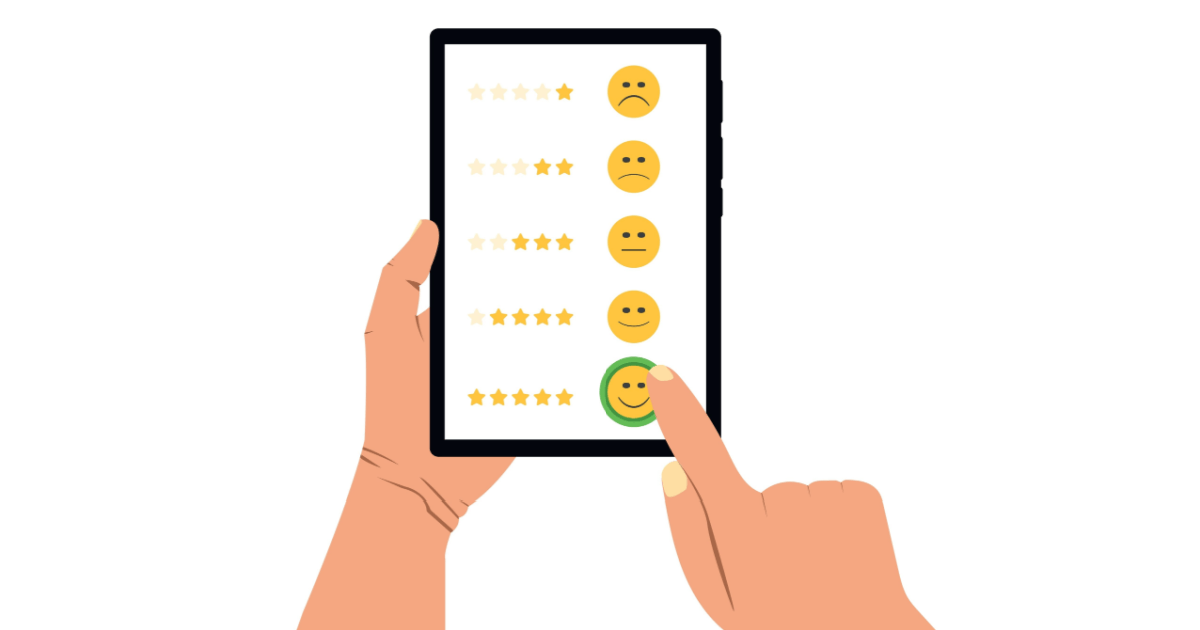August 11, 2023
One of the greatest forms of social proof available to brands is user-generated content, or UGC. Reviews (whether incentivized or not) are one form of UGC that helps drive conversion, letting shoppers see exactly what buyers of the products they’re interested in think about their purchases.
Getting customers to write those reviews, however, can be tricky.
This is where incentivized reviews come in — done correctly, these reviews help build trust between existing customers, potential customers, and your brand. We’ll cover the best practices of incentivized reviews, including how to source them, disclose them, and more.
Let’s get into it.
Chapters:
- What is an incentivized review?
- How to get authentic incentivized reviews
- Can you incentivize Google reviews?
- Why you should use incentivized reviews
- Get help from the UGC experts
What is an incentivized review?
Incentivized reviews are collaborations between a brand and its customers. The customer leaves reviews about their experience with the brand’s product or products, and in exchange, the brand gives them a small reward. It’s a symbiotic relationship: the brand gets social proof of the quality of its product or service, and the customer gets a discount code, loyalty reward points, or some other thank-you gift.
Essentially, you’re acknowledging the time and effort it takes for customers to write a review and expressing your thanks.
But incentivized reviews can be a double-edged sword for companies. Used well, they boost your connection to potential customers. They’ll see fellow shoppers giving their honest assessment of your product or service, which will (hopefully) drive them to purchase it.
Used poorly, they can be dangerous to your brand. You need to be transparent about which reviews are incentivized by clearly labeling them. Potential customers could end up feeling like they’ve been tricked if they later learn that a review was written in exchange for a discount vs. seeing that disclosed upfront.
Authenticity is vital in today’s market, and it’s important to have that come across in reviews. 78% of shoppers surveyed in our recent research said that product reviews were the most influential factor when they were making purchasing decisions.
How to get authentic incentivized reviews
We’ve already touched on one of the best practices of incentivized reviews: clearly labeling them with something like an incentivized review badge. But in order to label them, you first have to get them.
Getting authentic, valuable, incentivized reviews is important, and it can definitely be a challenge — customers are busy with so much competition for their limited time and attention. You have to balance offering a significant enough reward to customers that they feel appreciated for their time and effort without attracting those who would write a fake review just for the reward.
But don’t despair. It’s far easier than it seems! These best practices will ensure you’re getting genuine reviews that will help your brand grow organically.
Source them from your customers
The easiest way to get a review is simply by asking for one. Reach out to your customer mailing list directly or tap into your customer community. Find your customers where they’re already browsing, such as in a branded community space, on social media, or at in-person events.
These methods take more time and effort for your team if you don’t already have an existing outreach strategy in place. You’ll need to consider available resources before you decide to build your own brand community from scratch or dedicate your design team to creating in-store collateral asking for reviews.
No matter how you start your customer review outreach, a targeted sampling strategy will help you engage with your customers right away. That means reaching out to consumers and offering a product sample in exchange for an honest review. (Be sure to emphasize that last part!) These samples can be trial sizes, virtual samples, full products — whatever makes the most sense for your brand.
What does that look like in terms of driving conversions? Petco’s sampling program saw a 48% revenue increase on sampled products!
If a sampling program isn’t something your brand can handle logistically on your own, and you don’t have the resources to outsource it, you can start simpler with your incentivized review strategy. Offer discounts or a promo code in exchange for reviews, emailing customers soon after they’ve made a purchase when the product is still top-of-mind. You can also run a sweepstakes contest with extra entries earned by providing reviews.
Avoid common pitfalls with incentivized reviews
Sending a discount or coupon code is one thing, but you never want to pay shoppers outright for reviews. Paying for reviews directly discourages honest feedback, as reviewers might feel obligated to say nice things about the brand since they’ve been paid for their time. They’re less likely to admit what could be improved about a product, which is also valuable feedback for your team.
Paid reviews also make anyone reading the reviews feel like they couldn’t possibly be getting unbiased information about the product — avoid it at all costs.
And while incentivized reviews are great, they’re just one tool in your UGC toolbox. You shouldn’t rely on them exclusively in order to build trust in your brand. Be sure to put them in the mix with organic reviews and user-generated content from social media and any other digital platforms where your customers are active.
Can you incentivize Google reviews?
No, essentially. Technically you could, but you shouldn’t incentivize Google reviews. Google has their own reviews policy but you should never offer incentives in exchange for positive reviews or incentivize customers to remove negative reviews. If you’re caught doing it, your business can face serious consequences:
- Possible fines from the FTC — up to $50,000 per review
- Google’s algorithm will punish you and push you way down in search results
- Your review(s) will be taken down by Google
- Your brand reputation will take a huge negative hit
Why you should use incentivized reviews
It all comes back to building trust with your customers — the more they trust you, the more likely they are to recommend you to their friends, family, and online networks. Gotta love that good old word-of-mouth marketing! It builds brand loyalty and maybe even a little buzz. At the very least, the more your brand gets talked about, the more your brand awareness increases.
All of this also applies when it comes to reviews. They’re opinions coming straight from other shoppers, after all. According to our last Shopper Experience Index, 22% of global shoppers agree that UGC content — including reviews — makes them more likely to buy a product from an ad.
Incentivized reviews illustrate authenticity in your brand reviews and in your brand as a whole. You’re willing to put your products out there in the hands of consumers so that they will honestly tell you what they think of them.
But the best reason to use incentivized reviews? They work. Incentivized reviews have been shown to generate huge impacts on brands’ marketing efforts. Kraft Heinz earned 39 million impressions from incentivized reviews in just three sampling campaigns.
They’ve been able to boost their product launch success by getting new products out to hyper-targeted consumers and asking them for their honest feedback.
And instead of partnering with macro influencers, Rimmel London decided to implement a targeted sampling program. This resulted in a 44% sales lift. That’s huge given they were faced with the dual challenge of raising awareness for a beauty product and reigniting interest in one of their core products.
Get help from the UGC experts
Get incentivized reviews right — using an authentic exchange with your customers — and you’ll ultimately get more business.
One option is tapping into our 7.5-million-strong Influenster consumer community for an existing pool of shoppers who are already excited about the brands they love and eager to discover more — 98% of their review content is added organically and is non-incentivized.
Capturing UGC organically can be a challenge, but the Influenster community is highly engaged, and we saw this as a good way to drive purchase intent.
Michael Kremer, CMO, Pacifica Beauty
The large proportion of organic reviews gives incentivized reviews more authority — these reviewers are seasoned and aren’t just in it to get free stuff! They’re sharing their feedback because it’s something they’re genuinely interested in doing.
Bazaarvoice will help you with an incentivized review program as part of your strategy to generate authentic UGC, increase brand awareness, and cultivate lasting brand loyalty. Get in touch below to get started.
Get started









